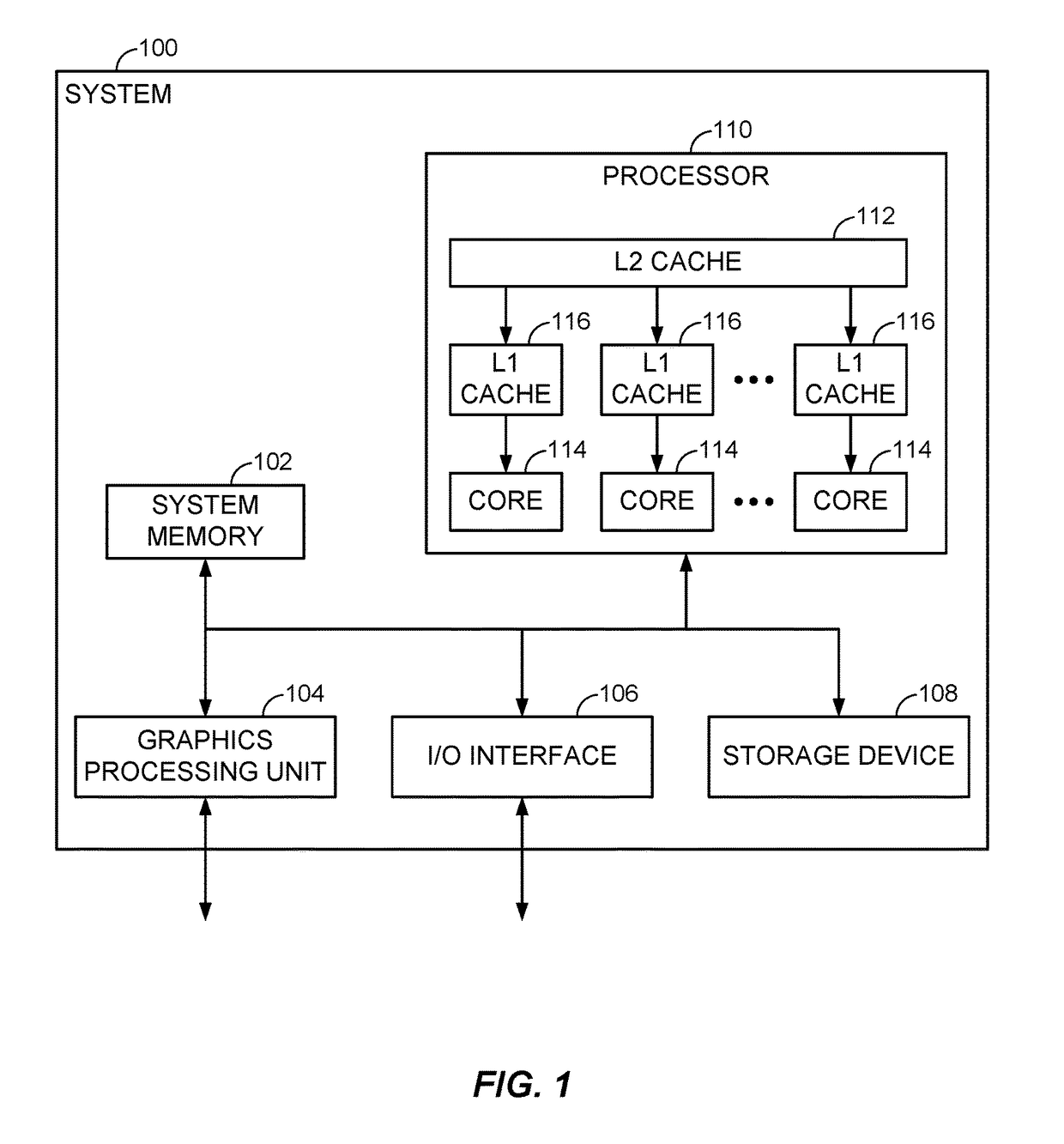Memory violation prediction
a technology of memory violation and prediction, applied in the field of memory violation prediction, can solve the problems of inability to be ready, memory operation, out-of-order execution,
- Summary
- Abstract
- Description
- Claims
- Application Information
AI Technical Summary
Benefits of technology
Problems solved by technology
Method used
Image
Examples
Embodiment Construction
[0019]Disclosed are methods and apparatuses for preventing memory violations. In an aspect, a fetch unit accesses, from a branch predictor of a processor, a disambiguation indicator associated with a block of instructions of a program to be executed by the processor, and fetches, from an instruction cache, the block of instructions. The processor executes load instructions and / or store instructions in the block of instructions based on the disambiguation indicator indicating whether or not the load instructions and / or the store instructions in the block of instructions can bypass other instructions of the program or be bypassed by other instructions of the program.
[0020]These and other aspects of the disclosure are disclosed in the following description and related drawings directed to specific aspects of the disclosure. Alternate aspects may be devised without departing from the scope of the disclosure. Additionally, well-known elements of the disclosure will not be described in de...
PUM
 Login to View More
Login to View More Abstract
Description
Claims
Application Information
 Login to View More
Login to View More - R&D
- Intellectual Property
- Life Sciences
- Materials
- Tech Scout
- Unparalleled Data Quality
- Higher Quality Content
- 60% Fewer Hallucinations
Browse by: Latest US Patents, China's latest patents, Technical Efficacy Thesaurus, Application Domain, Technology Topic, Popular Technical Reports.
© 2025 PatSnap. All rights reserved.Legal|Privacy policy|Modern Slavery Act Transparency Statement|Sitemap|About US| Contact US: help@patsnap.com



